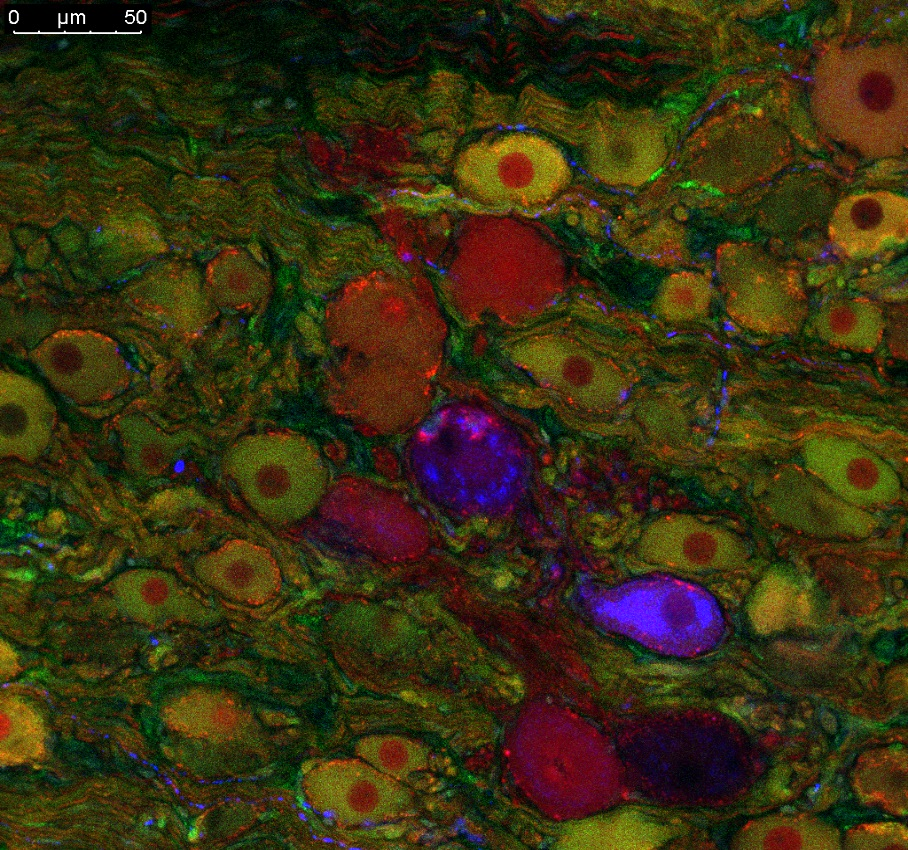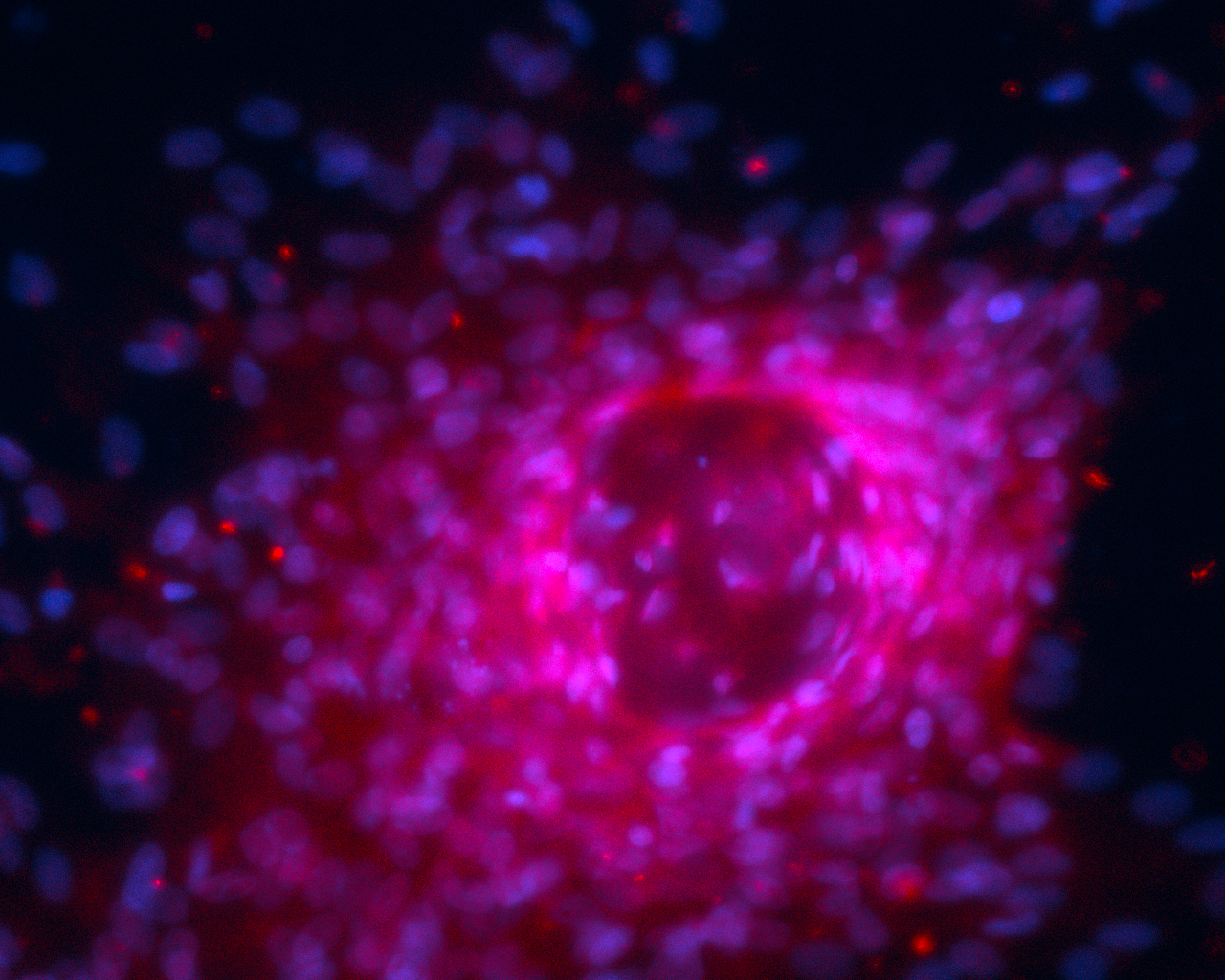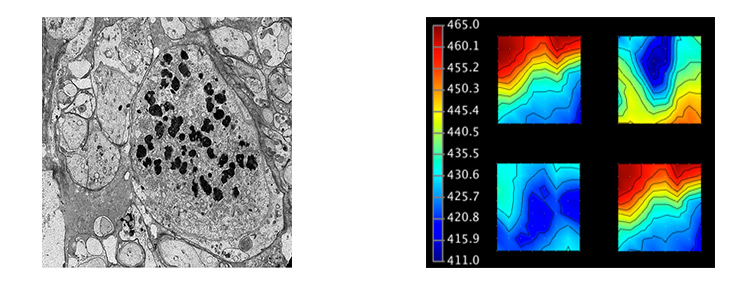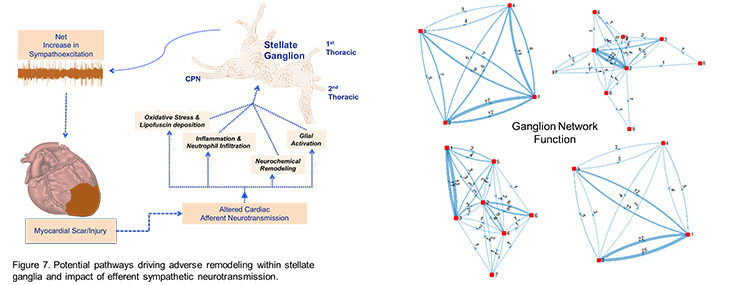Contact Us
Ajijola Laboratory
650 Charles E Young Dr. S
CHS 37-300
Los Angeles, CA 90095
310-794-6695
Our Research

Welcome to our lab.
We study the peripheral neural circuits that control cardiac electrophysiologic function in health and disease. Our studies utilize cutting edge tools to probe autonomic neurons involved in regulating the heart (e.g., optogenetics, chemogenetics, viral tracing, fiber photometry), while performing high-resolution cardiac electrical mapping and cardiovascular phenotyping in small and large animal models of cardiovascular disease (myocardial infarction, nonischemic cardiomyopathy and pacing-induced cardiomyopathy).
Our lab is part of the UCLA Cardiac Arrhythmia Center & the UCLA Neurocardiology Program of Excellence.
News

- Dr. Olujimi Ajijola received the Burdon Sanderson Prize Lecture 2023 at Oxford University.
- UCLA Cardiac Arrhythmia Center Awarded $11.5 Million NIH Program Project Grant (PPG) to Study Basic Mechanisms of Cardiac Arrhythmia and Neuromodulation
- Dr. Ajijola awarded a Chan Zuckerberg Initiative Science Diversity Leadership Award
- Marissa Pennino wins the Dean’s Science Prize for Undergraduate Research
- Kiyoshi Masuyama wins a Heart Rhythm Society (HRS) post-doctoral research fellowship.
- Youstina Labib wins travel award to attend the American Physician Scientist Association meeting in Chicago.
- Dr. Ajijola elected to the American Society for Clinical Investigation
- Devaki Abhyankar awarded NSF Graduate Research Fellowship Program (GFRP) grant.
- Congratulations to lab alumnus post-doc Dr. Sachin Sharma on publishing your paper
- Jaime Contreras and Hassan head off to medical school (MD PhD & MD respectively)
- We are looking for talented trainees and scientists to join our team & this fascinating area of investigation. Feel free to send us a note - ajijolalab@mednet.ucla.edu
About the PI
Associate Professor of Medicine

Our basic/translational research interests are focused on understanding how cardiac sympathetic innervation/function remodels in response to cardiac injury, and the mechanistic underpinnings of cardiac arrhythmogenesis in this setting. Using state-of-the-art electrical mapping techniques, we are able to study myocardial electrical propagation under a variety of sympathetic and parasympathetic loads. In addition to cardiac electrical mapping, other expertise includes intraganglionic neural recordings, targeted inductions of cardiovascular disease models.
From a clinical research perspective, we are interested in the application of neuro-modulatory therapies, as adjunctive therapies, for treating patients with minor and severe cardiac arrhythmias, and identifying biomarkers of autonomic function capable of identifying arrhythmia and sudden death risk.
The autonomic nervous system controls all aspects of cardiac function, including cardiac electrical properties. This occurs in both healthy states and following cardiac disease. In both situations, cardiac sympathetic activation can generate both the trigger for the initiation of dangerous heart rhythms, as well as the electrical substrates that enable those rhythms to persist. Shown below are some of the electrical effects of sympathetic activation on a normal heart, and a diseased heart following a heart attack (myocardial infarction).





